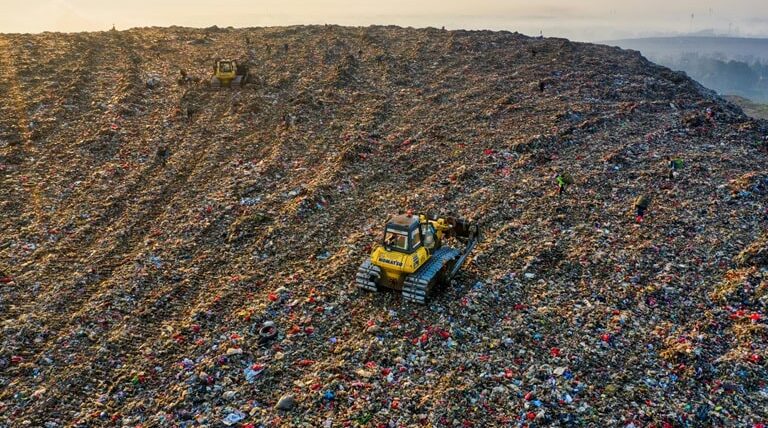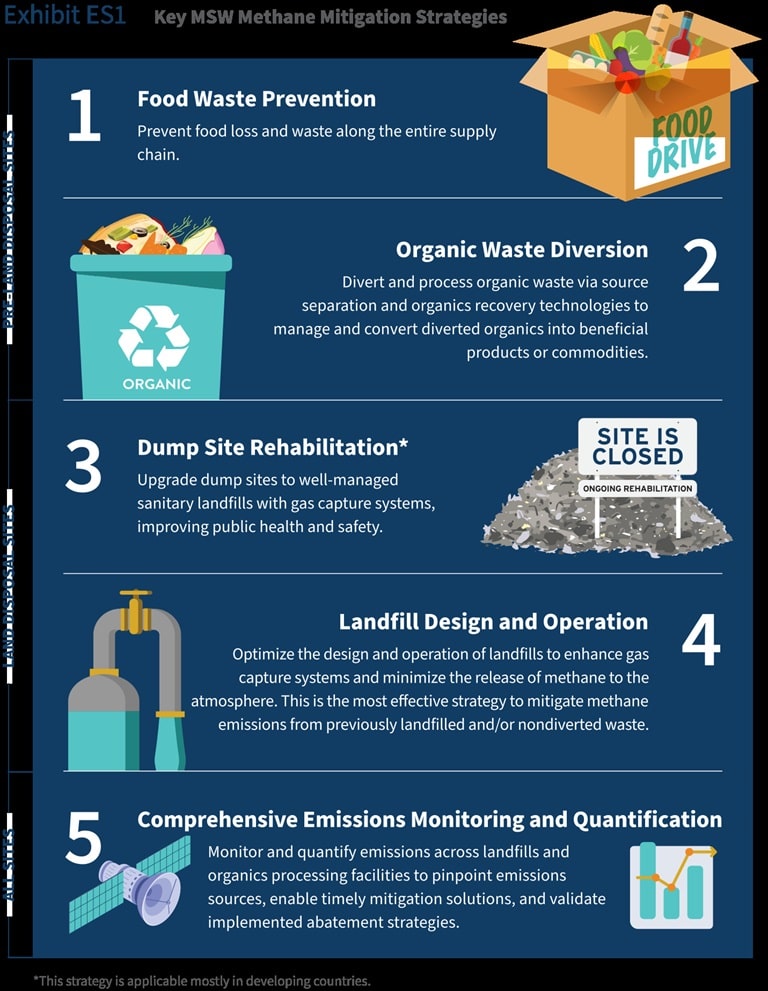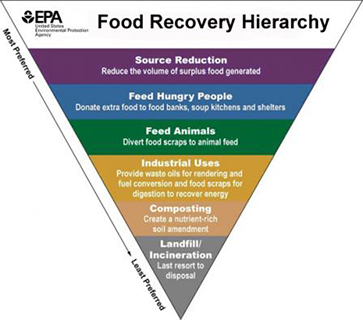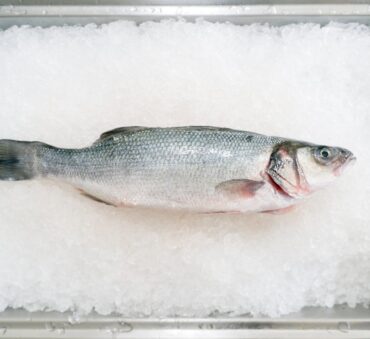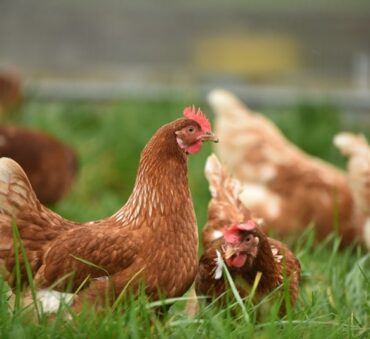The food waste crisis goes way beyond just throwing food in the trash. While the problem may start here, the unfortunate reality is that this small act has a huge long-term impact on our environment.
Yes, we’re referring to methane, a greenhouse gas that’s more potent than carbon dioxide. This gas is produced as food slowly decomposes in landfills.
As one of the largest contributors to global warming, we must all hold ourselves accountable for reducing the production of methane. But how do we keep food out of landfills in the first place?
Dive into this topic with us, where we’ll explore the environmental impact of food waste, the reality of methane emissions, and the need for innovative solutions.
Key Takeaways
- Municipal solid waste landfills are the third-largest source of methane emissions from human activities in the United States.
- At least 25% of today’s global warming is driven by methane from human actions.
- Many food waste laws and initiatives have been implemented to address the crisis, such as tax incentives, farm bill programs, and better access to waste management solutions.
- Consumers must change their habits to help keep food out of landfills. Both businesses and families should apply various strategies to reduce the amount of food waste being produced.
The Scale of Food Waste in Landfills
The reality of food waste is shocking, and yet the numbers keep growing by the day. Keep reading to better understand how much food waste is being generated and the effects of food waste in landfills.
Global and National Statistics on Food Waste in Landfills
So, how bad is food waste around the world?
Studies show that the world wastes about 2.5 billion tons of food every year, with the United States discarding more food than any other country in the world. In fact, over one-third of the food produced in the U.S. is never eaten, acting as the largest material in landfills throughout the United States.
To give you an idea of the impact this has on the environment, food waste in the U.S. causes greenhouse gas emissions equivalent to those of more than 50 million gas-powered vehicles. An estimated 8-10% of global greenhouse gas emissions are associated with food that is not consumed.
In regard to methane emissions, food waste in landfills contributes more to them than any other landfilled materials. Studies show that municipal solid waste landfills are the third-largest source of methane emissions from human activities in the United States.
By understanding the reality of today’s food waste crisis, businesses and residents can better grasp the urgent need to create a better solution.
Environmental Impact of Food Waste in Landfills
But how does food waste release methane?
Food waste in landfills is buried under layers of food and other materials, meaning it must decompose in an oxygen- and light-free environment. This decaying process generates food waste methane gas, one of the greenhouse gases that contributes to global warming (we’ll cover this in more detail below). Aside from methane emissions, food waste leads to air pollution, groundwater and soil contamination, and the consumption of valuable land that affects communities across the world.
While landfills are unavoidable, the goal is to reduce the amount of waste by creating innovative alternatives. Composting, for instance, is a natural process in which food waste is broken down by microorganisms with the help of sunlight. The result is a nutrient-rich organic material, otherwise known as compost, which can be used as fertilizer.
The difference that food waste decomposition in landfills has with healthier alternatives is huge. Instead of increasing methane emissions, composting shows that it is possible to turn food waste into a healthy solution for the environment.
And while composting is a popular option, it’s by far the only one. Anaerobic digestion, industrial rendering, and food waste recycling programs are a couple of the waste management strategies that can make a difference.
Methane Emissions: The Invisible Threat
Menthane, as mentioned, is a powerful food waste greenhouse gas that contributes to climate change. But how does the way food decay relate to the global climate change crisis?
Essentially, methane emissions have powerful heat-trapping properties. Known as the greenhouse effect, gases such as methane trap heat from the sun in the atmosphere, helping to maintain a habitable temperature on earth.
The problem? When too many of these gases are produced, an excess of heat is retained, contributing to the current global warming crisis.
Understanding Methane Emissions from Food Waste
We’ve briefly mentioned that the environment in which food waste is exposed is what turns it into methane, but now let’s take a deeper look at the complex decaying process.
Food waste goes through multiple processes before turning into methane. The initial food waste breakdown is the first step of the process and involves microorganisms breaking down the food waste. This step involves hydrolysis, the chemical breakdown of a compound due to a reaction with water.
Next, the broken-down compounds from hydrolysis are further metabolized in the acidogenesis phase. Acidogenic bacteria convert these compounds into fatty acids, alcohols, and other organic acids. During the next step, the acetogenesis phase, this bacterium is further metabolized, producing acetic acid.
And the step where food waste methane is actually produced is referred to as methanogenesis. This is where a group of microorganisms called methanogenic archaea convert acetate, hydrogen, and carbon dioxide into methane.
It’s also important to note that there are outside factors that affect the extent of methane production. The quantity and composition of food waste, along with environmental factors such as temperature, pH, and moisture content, influence how much methane is produced.
Comparing Methane to Other Greenhouse Gases
Any gas that traps heat in the atmosphere is called a greenhouse gas. Some of the well-known greenhouse gases include carbon dioxide, nitrous oxide, fluorinated gases, and of course, methane.
What makes methane stand out from the rest is its powerful heat-trapping properties. Methane has more than 80 times the warming power of carbon dioxide over the first 20 years after it reaches the atmosphere, and it is at least 28 times more effective than CO2 at trapping heat in the atmosphere over a 100-year period.
Although some greenhouse gases, such as CO2, have a longer-lasting effect, methane makes a more drastic difference in the short term. At least 25% of today’s global warming is driven by methane from human actions.
Strategies to Mitigate the Impact of Food Waste in Landfills
The EPA and USDA announced a national goal to reduce food loss and waste in the U.S. by 50% by 2030. With this goal have come many food waste laws that work to reduce the amount of food waste that goes to landfills.
One of the acts that has encouraged businesses and organizations to start donating excess food is the Bill Emerson Good Samaritan Food Donation Act. The reason this act is so important is because one of the contributing factors to healthy food in landfills is the misunderstanding of expiration dates. Under this act, businesses are encouraged to donate food without being held liable if it causes harm to the recipients, and as a result, keeps more food out of landfills.
Many cities and states are also implementing their own laws and incentives, such as tax breaks, for those who donate or recycle excess food. There are many different strategies, such as composting, using excess food as animal food, and taking more accurate inventory in food establishments.
All of these efforts help keep food out of landfills and, as a result, reduce methane emissions. However, sustainable waste management practices should be applied at all levels, including consumers.
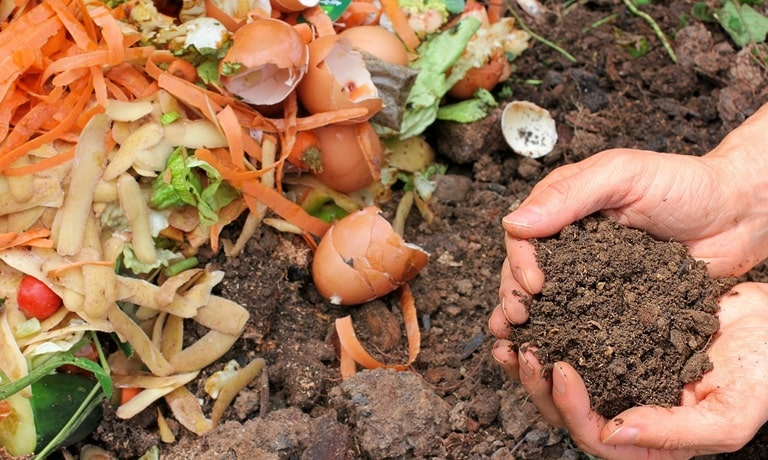
Reducing Food Waste at the Source
Did you know that 43% of food waste in the United States comes from homes?
Changes in consumer behavior start with our everyday habits. There are many things that we can do to contribute:
- Understand expiration labels: Food is often thrown out because of a simple misunderstanding of food labels. ‘Best-before’ dates give you an idea of how long foods will last before they start to lose quality, but they can often still be consumed if properly stored. ‘Use-by’ means that the product should be consumed before or on that date. Before rushing to throw out products, check their taste and smell to determine if they can still be consumed.
- Store food properly: Throwing away food because it wasn’t stored properly is not only bad for the environment but for your wallet as well. Start using containers that can be sealed properly, reading instructions on the package on how to store them, and even creating a system that helps you know which products to consume first.
- Meal plan: Many people go to the grocery store and buy a long list of food that they never use. By creating a shopping list, you can purchase the specific amount of food that you need to prevent buying excess food and letting it go to waste.
- Get creative with your food scraps: Food can be used in many ways that you may not have originally planned. For instance, if you buy an excess of spinach for a specific dish, you can use it in a smoothie, incorporate it into another dish, or even create a stock to avoid throwing it out.
While many laws are being passed to address what businesses need to do with their food waste, there are also things they can do to reduce the amount of waste they produce:
- Inventory management systems: New management technology makes tracking inventory easier than ever. This helps businesses reduce overstocking, which translates to less food waste and methane emissions.
- Train employees in waste management: Many employees are unaware of the global food waste crisis and don’t always take it into consideration during operations. By training employees in waste management, companies can prevent excess waste and better understand how to handle the waste that is produced.
- Prevent the overproduction of food: A big contributor to food waste in restaurants is the inability to forecast customer demand. The use of innovative technology can help businesses have a better prediction of their client behavior.
- Create partnerships: And since food waste can’t be 100% avoided, a great solution is to make partnerships with organizations that accept donations as well as food waste management companies. These partnerships help you manage your waste easier and offer innovative waste management solutions.
Advances in Waste Management and Recycling
New strategies in waste management and recycling work to address the environmental impact of food waste and landfills. Over the years, many new advances have been made thanks to new technologies, practices, and strategies.
One of the innovative solutions is producing biogas from food waste. Biogas is a renewable energy source that forms through anaerobic digestion, a process where bacteria break down biodegradable materials in an oxygen-free environment. Producing biogas has multiple benefits, such as the reduction of greenhouse gases, its ability to help manage organic waste more effectively, reduced odor and pollution, and more. The production of biogas technology helps make this option available to more people and businesses.
Food waste recycling technology has also proven to be a great tool in food waste management, addressing problems such as collection, treatment, recycling, and prevention. The emergence of new software solutions gives businesses access to a range of innovative tools, systems, and approaches aimed at reducing and managing food waste throughout the supply chain, from production to consumption.
Another great food waste management strategy is food waste upcycling, the process of transforming waste into new products. There are many ways this can be carried out, both at home and in the food industry. With this approach, food waste that would otherwise be put in landfills is used in a variety of ways: to create new dishes, turned into animal feed or fertilizer, or used to produce biochar.
Converting food waste to animal feed is a particularly effective strategy that helps reduce the environmental impact of food waste from landfills. There are many federal laws in place to ensure that this strategy protects animals and, when properly carried out, can have many social, economic, and environmental benefits.
Legislation Around Food Waste in Landfills and Methane Gas Emissions in the U.S.
As discussed, the United States has passed multiple laws and incentives to help reduce the amount of food waste being produced. The EPA’s Food Recovery Hierarchy has developed a food recovery strategy that aims to reduce wasted food. See the image below.
Other legislative actions, such as tax incentives, farm bill programs, and better access to waste management solutions, have been implemented around the United States to contribute to the cause.
California has stood out for its food waste reduction efforts. One of the ways California has brought awareness to the crisis is by requiring all of its inhabitants to separate their organic waste while also making it mandatory for certain businesses to donate edible food to food recovery organizations.
California has also provided financial incentives and funding opportunities for composting and anaerobic digestion facilities to process organic waste, including food scraps. Overall, their laws and incentives have stood out for their success in encouraging residents and businesses to improve their food waste habits and find healthy ways to handle waste.
Federal Legislation and Policies
Federal regulations and policies are key to reducing methane emissions in landfills. In 2016, the Environmental Protection Agency (EPA) made a policy in regard to how landfills must address methane emissions. Landfills built or changed after July 17, 2014, and that are at least 2.4 million metric tons, must start capturing landfill gases when they produce 34 metric tons (as opposed to the before 50 metric tons rule). This rule also adjusted the monitoring requirements and expanded approved uses for landfill gas.
While some states haven’t implemented this rule yet, the EPA made a plan for those states and created new rules for them to follow. This plan helps make sure that landfills throughout the United States are working to reduce their methane emissions.
California’s Landfill Methane Regulation
California’s regulation on methane emissions from municipal solid waste landfills is designed to control and reduce the release of methane gas from landfills. This regulation defines gas collection and control, operational standards, monitoring and reporting, emission reduction goals, enforcement, and state oversight.
By controlling the production of methane emissions, California is contributing to the movement toward improving clean energy adoption and reducing food insecurity.
Conclusion
Shapiro is dedicated to providing comprehensive organic waste disposal solutions to help reduce methane emissions and help companies comply with new regulations. With over 30 years in the industry, we have the experience and knowledge required to find innovative solutions to a variety of difficult waste problems.
By having an external partner in waste management, you can do your part in keeping food out of landfills and reducing methane emissions.
Contact us to discuss our waste management solutions.
Baily Ramsey, an accomplished marketing specialist, brings a unique blend of anthropological insight and marketing finesse to the digital landscape. Specializing in educational content creation, she creates content for various industries, with a particular interest in environmental initiatives.
